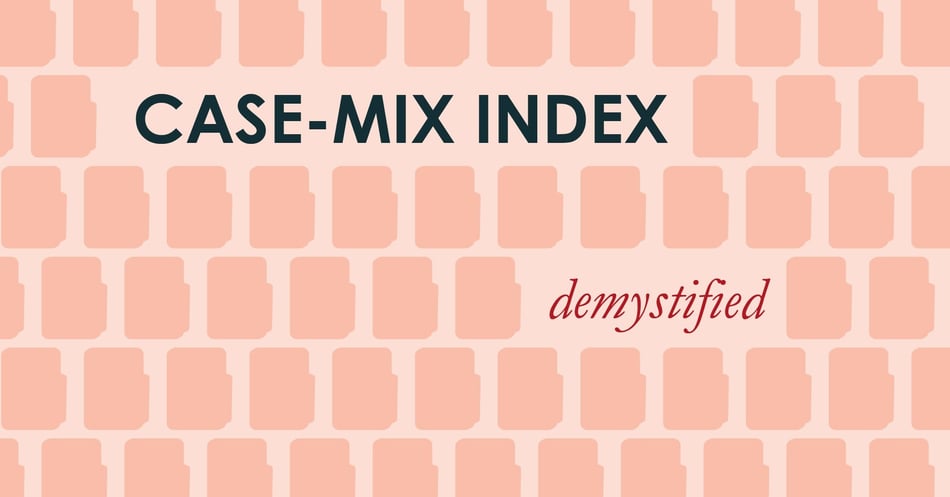Case-Mix Index Demystified: Part 2

 Last week, we looked at Diagnosis-Related Groups and how they receive codes based on cost and complexity. These numbers play a key role in the Case-Mix Index, and today we will look at how those MS-DRGs form the basis of the CMI.
Last week, we looked at Diagnosis-Related Groups and how they receive codes based on cost and complexity. These numbers play a key role in the Case-Mix Index, and today we will look at how those MS-DRGs form the basis of the CMI.
On a case-by-case basis, a patient's MS-DRG assignment can be used by the hospital to anticipate treatment and costs associated with that patient. But if a hospital wants to anticipate costs on a macro scale, say, to determine the next year's budget, they need to have a big picture of the mix of patients - the mix of cases - being treated at the hospital. They need some kind of measure, or indicator, for that mix of patients. They need the Case-Mix Index.
The first step is to translate all the MS-DRGs into a form that allows analysis - a number. As we mentioned in the last post, a relative weight is assigned (by CMS each October) to each MS-DRG. The weight tells you how many times to multiply a base unit of cost - which is determined for each hospital based on a number of attributes such as size, geographic location and type of hospital - to find out the average cost for each procedure.
Let's say a hospital's base unit of cost is $5,000 (that number could be lower in a rural hospital, or higher in a big city). A less complex MS-DRG such as pneumonia gets a number less than 1, because it costs less than that base unit of cost (MS-DRG .71, or $3,550). Complex MS-DRGs - like a heart transplant - take a lot of resources, so they get very high weights (MS-DRG 26.2, or $131,500).
Now for the macro, big-picture analysis. The CMI is one number capturing all the mixture of cases during a set period of time. It's a rough number, some might say a crude indicator, of what is taking place in the hospital, but it is still valuable. This is how it is generated: Add all the relative weights of each individual MS-DRG assigned during a set period of time and divide that number by the total number of cases during that same period of time. The result is the CMI.
If a hospital had 50 Medicare discharges in March 2018, this is what the CMI formula would look like:
![]()
The result is a kind of "average MS-DRG," much like a report card grade is a weighted average of scores earned over the course of a quarter, semester, or year. And that's the CMI!
Next week, we'll explore who uses the CMI, and what it can say about your hospital. Stay tuned!
Editor's Note: This post was originally published in May 2018 and has been updated for freshness, accuracy and comprehensiveness.
![EOScu Logo - Dark - Outlined [07182023]-01](https://blog.eoscu.com/hubfs/Eoscu_June2024/Images/EOScu%20Logo%20-%20Dark%20-%20Outlined%20%5B07182023%5D-01.svg)




